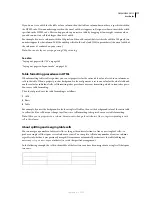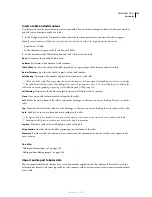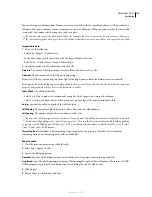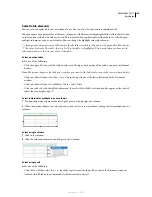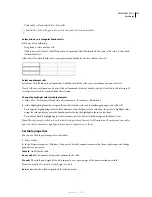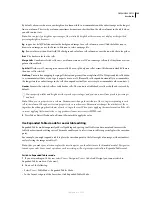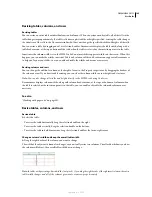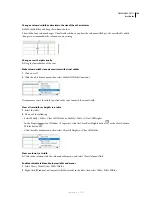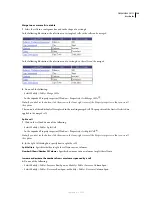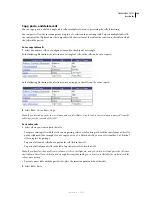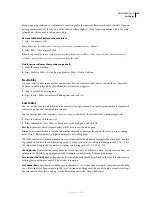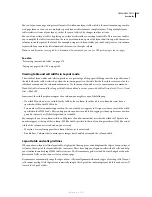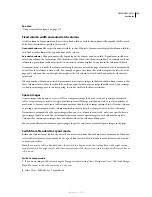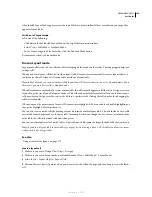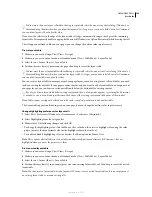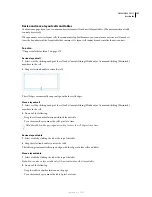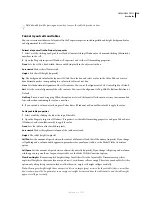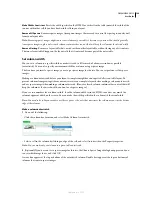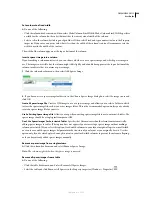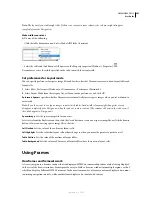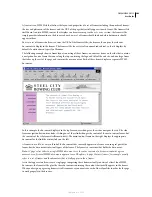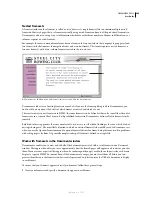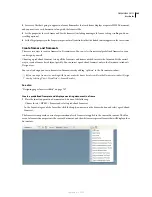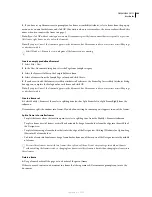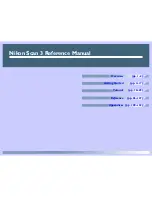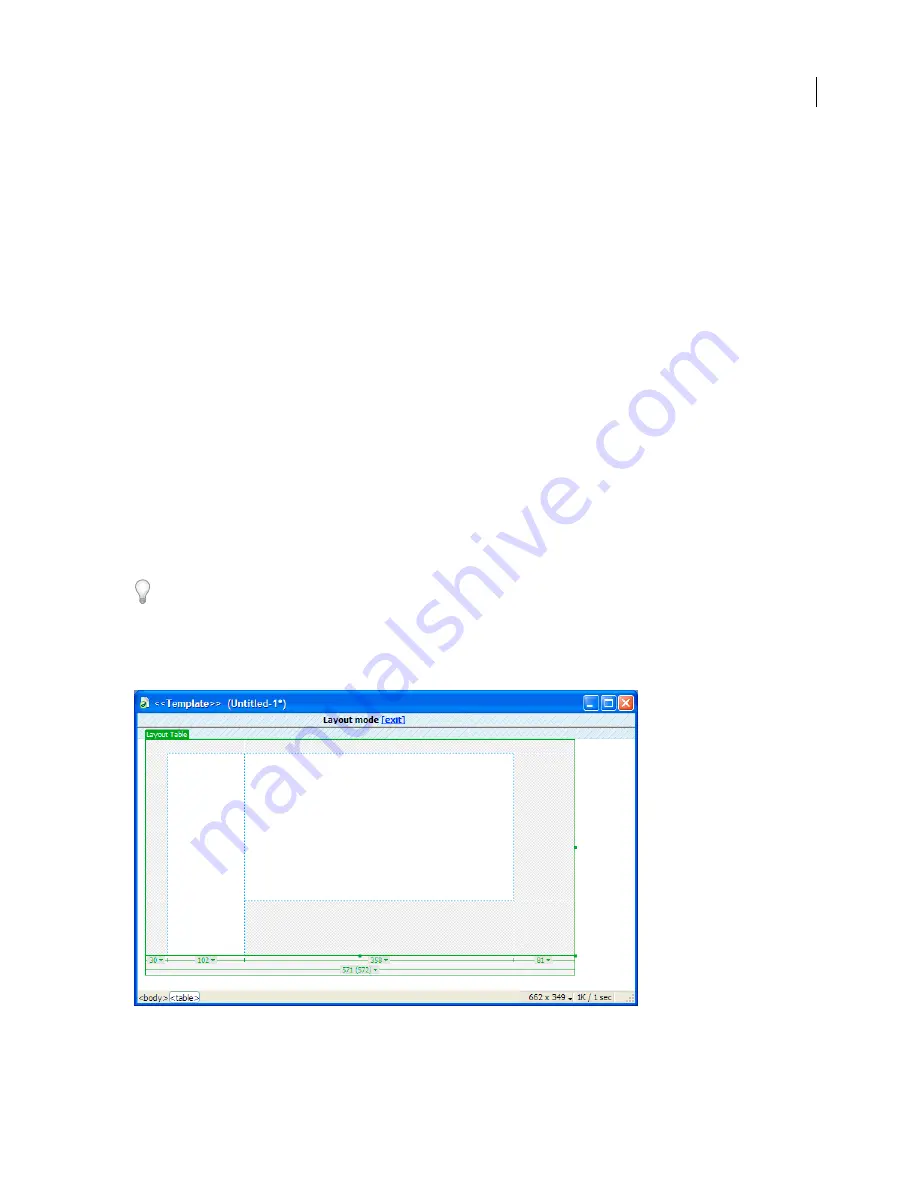
DREAMWEAVER CS3
User Guide
191
Sort Footer Rows
Specifies to sort all the rows in the table’s
tfoot
section (if any) using the same criteria as the body
rows. (Note that
tfoot
rows remain in the
tfoot
section and still appear at the bottom of the table even after
sorting.) For information about the
tfoot
tag, see the Reference panel (select Help > Reference).
Keep All Row Colors The Same After The Sort Has Been Completed
Specifies that table row attributes (such as color)
should remain associated with the same content after the sort. If your table rows are formatted with two alternating
colors, do not select this option to ensure that the sorted table still has alternating-colored rows. If the row attributes
are specific to the content of each row, then select this option to ensure that those attributes remain associated with
the correct rows in the sorted table.
Laying out pages in Layout mode
About Layout mode
One common method for creating a page layout is to use HTML tables to position elements. Tables were originally
created for displaying tabular data, not for laying out web pages; Dreamweaver provides Layout mode to streamline
the process of using tables for page layout.
In Layout mode, you use layout cells and tables to lay out your page before adding content. For example, you could
draw a cell along the top of your page to hold a header graphic, another cell on the left side of the page to hold a
navigation bar, and a third cell on the right to hold content. As you add content, you can move cells around as
necessary to adjust your layout.
For maximum flexibility, you can draw each cell only when you’re ready to put content into it. This enables you to
leave more blank space in the layout table for a longer time, so that you can move or resize cells more easily.
Layout tables appear outlined in green on your page; layout cells appear outlined in blue on your page. When you
move the pointer over a table cell, Dreamweaver highlights the cell. (You can change default outline and highlight
colors in preferences).
September 4, 2007

